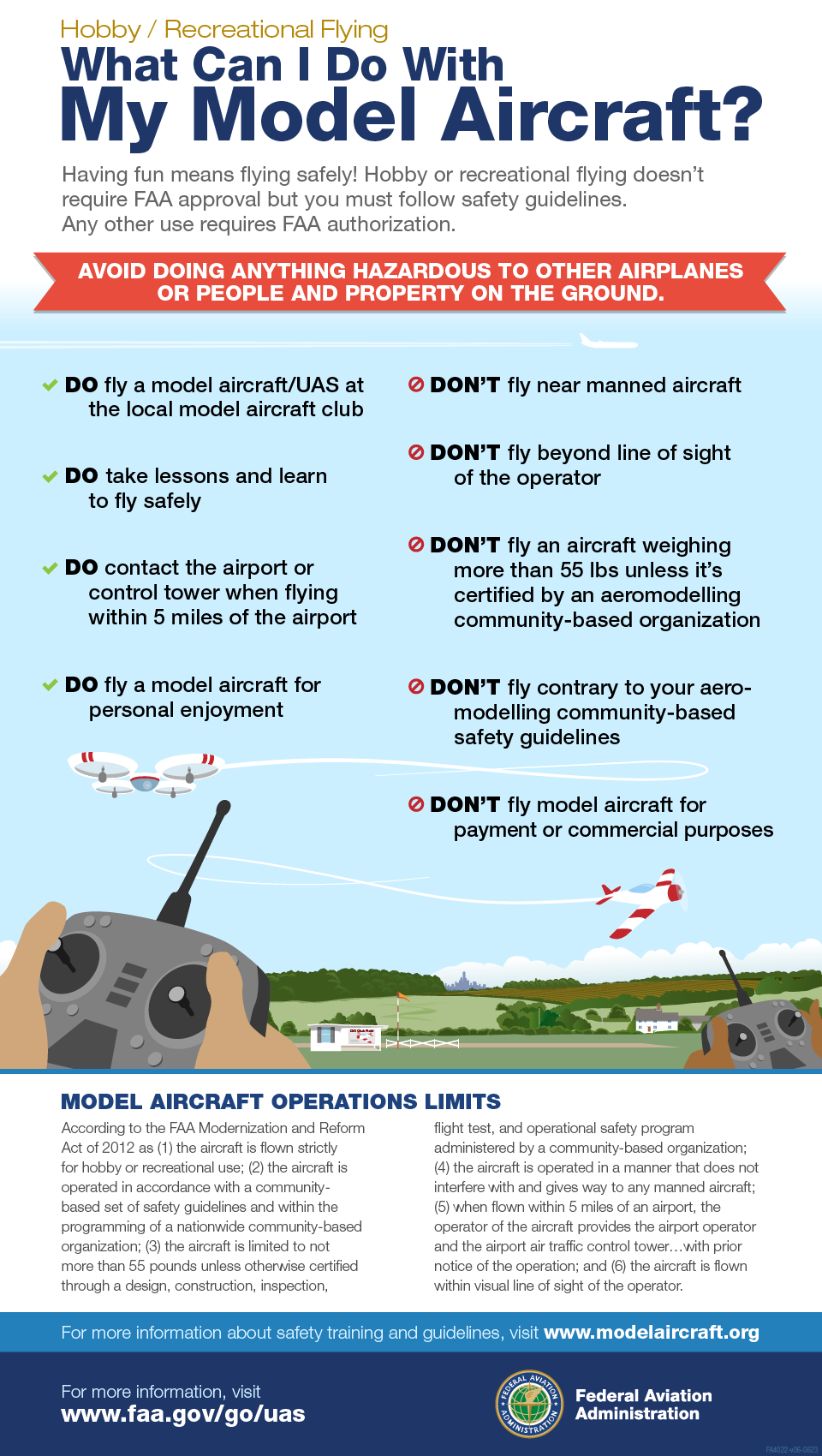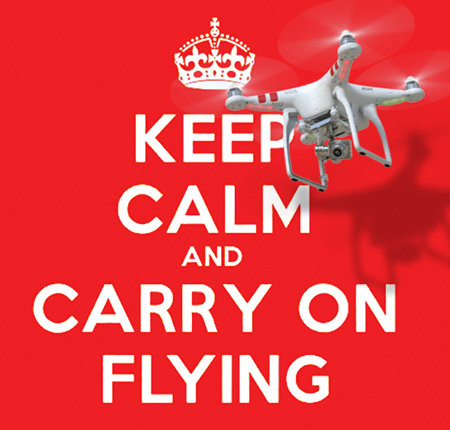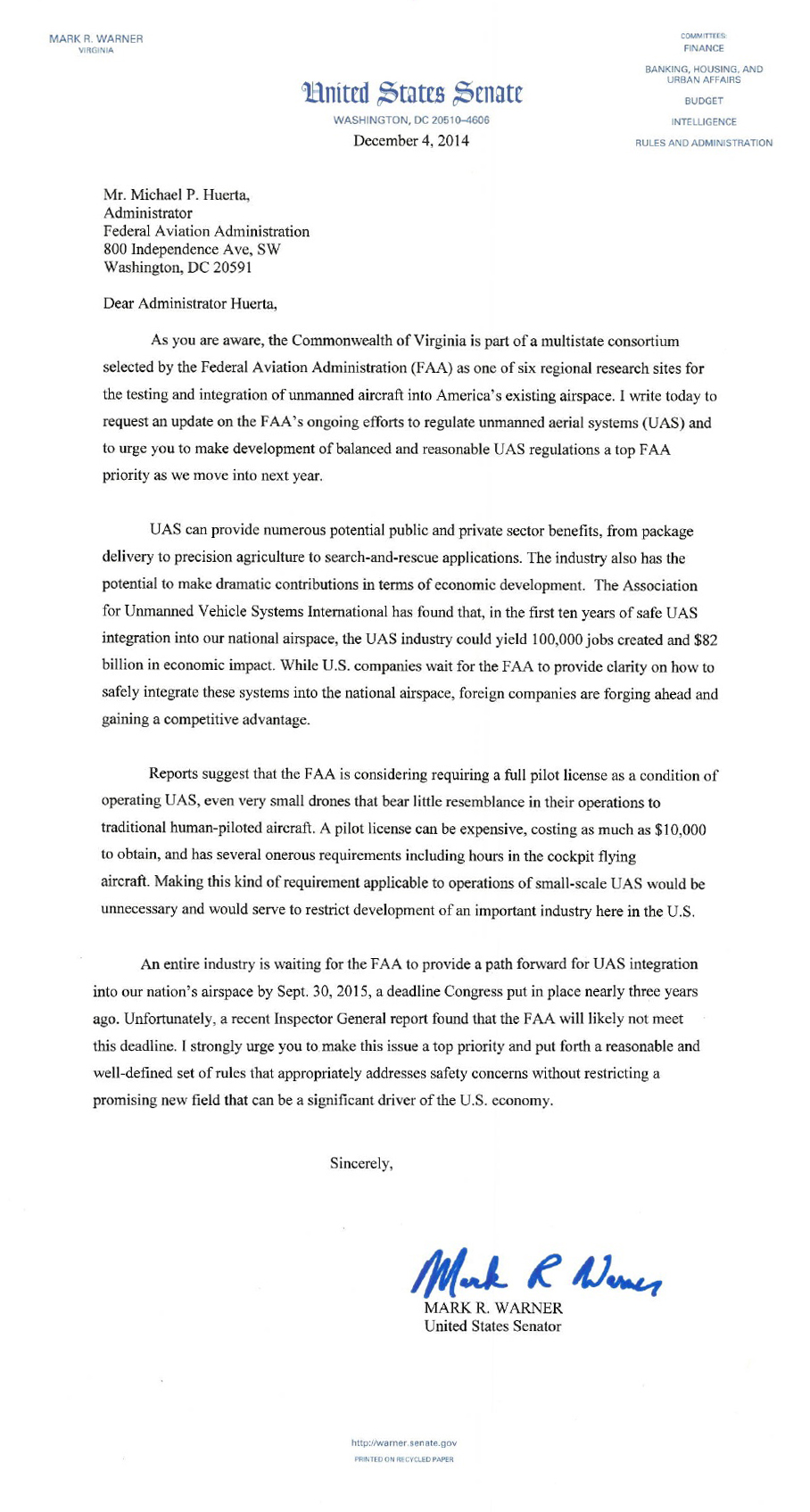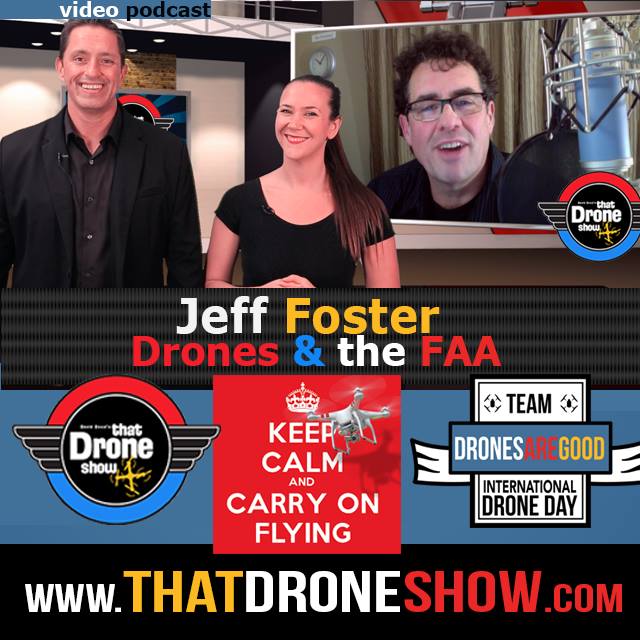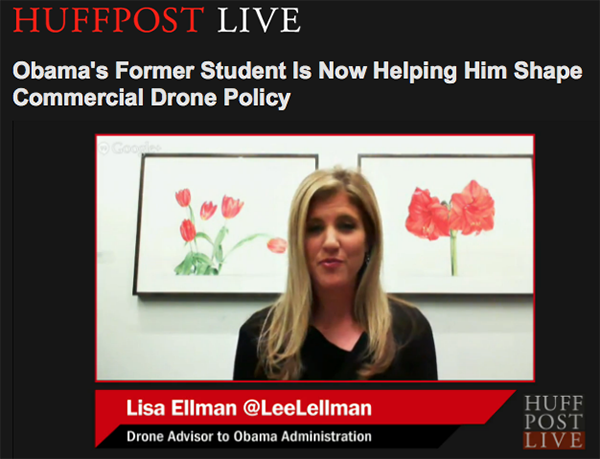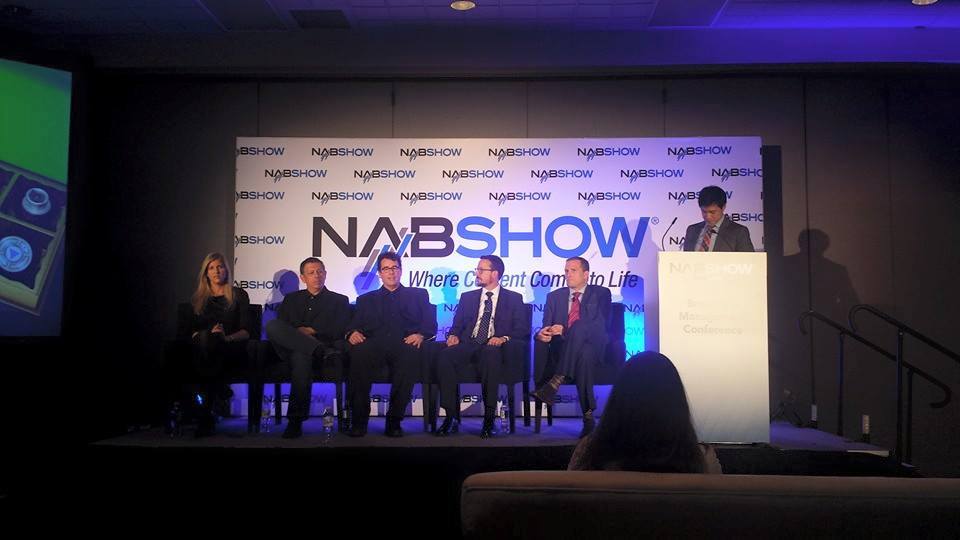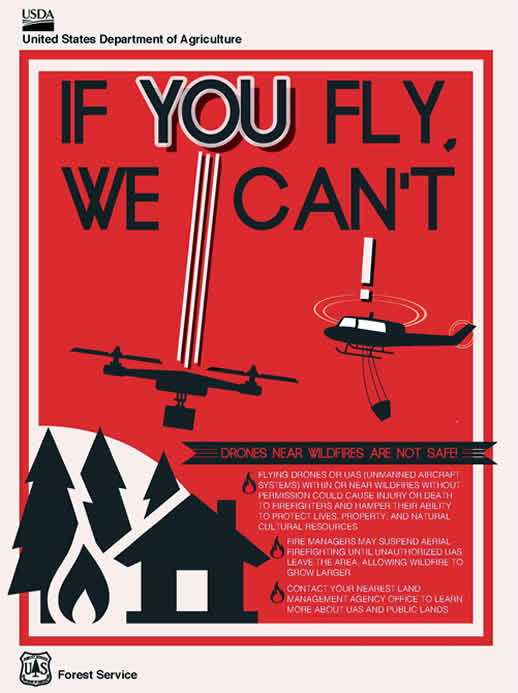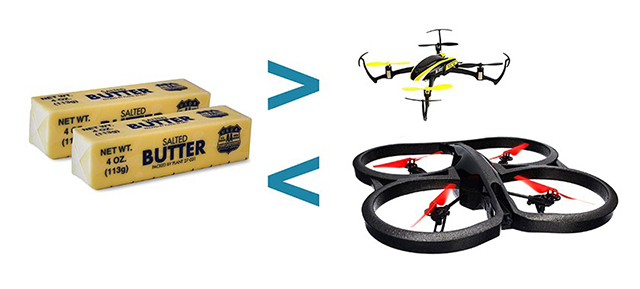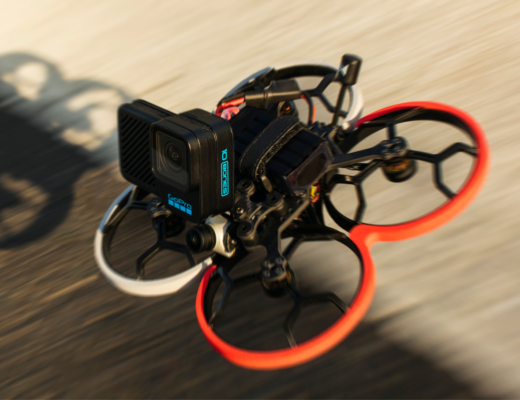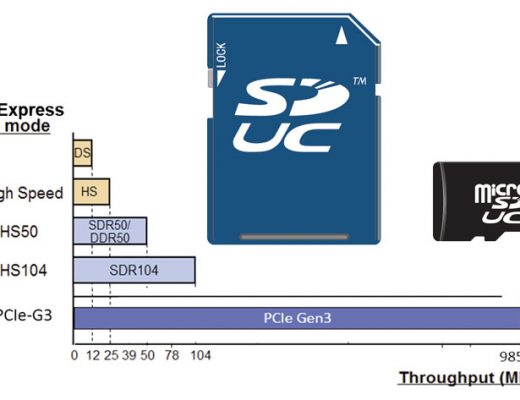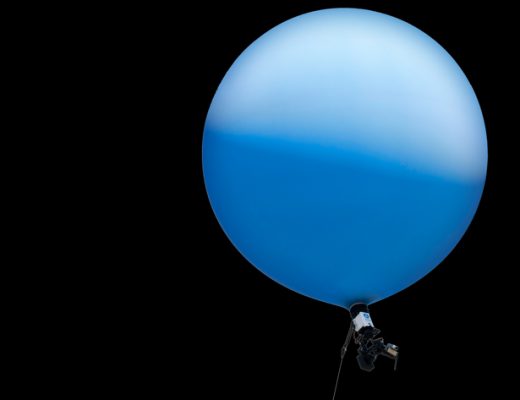With the publishing of Jack Nicas and Andy Pasztor’s speculative and interpretive article in the Wall Street Journal in the fall of 2014, it seems every news agency, media outlet and publication has totally lost their minds in a fit of hysteria liken to Chicken Little proportions; sparking “end of days” tweets and forum discussions throughout the social mediasphere that has brought on an industry-wide panic akin to Orson Wells’ War of the Worlds live broadcast radio play. Let’s just stop right there and breathe for a moment – turn off the TV, put down that paper and let’s look at some facts… (Last UPDATED 1/14/2016 at bottom of article)
With the publishing of Jack Nicas and Andy Pasztor’s speculative and interpretive article in the Wall Street Journal in the fall of 2014, it seems every news agency, media outlet and publication has totally lost their minds in a fit of hysteria liken to Chicken Little proportions; sparking “end of days” tweets and forum discussions throughout the social mediasphere that has brought on an industry-wide panic akin to Orson Wells’ War of the Worlds live broadcast radio play. Let’s just stop right there and breathe for a moment – turn off the TV, put down that paper and let’s look at some facts… (Last UPDATED 1/14/2016 at bottom of article)
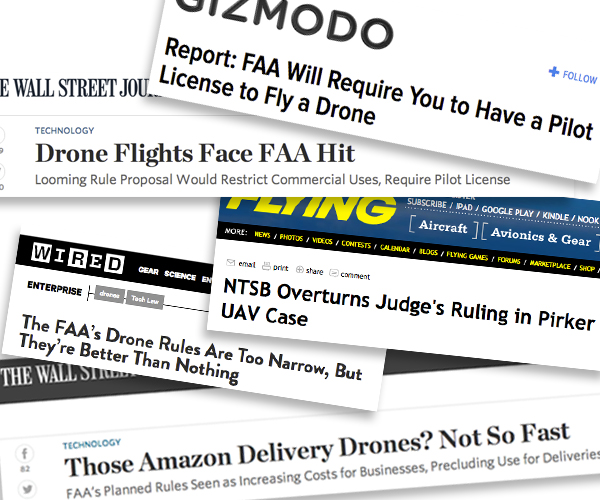
If you’re new to the sUAV (small Unmanned Aerial Vehicle) and sUAS (small Unmanned Aerial Systems) or “drones” industry and are only reading the headlines today or hearing the rumors and fears of those around you (or on TV) then you probably think that sUAV you bought or were thinking of buying for the holidays is just going to have to sit on the shelf until the FAA gets around to making up the new regulations for the industry.
You might think… but you’d be wrong.
First of all, the FAA can’t make laws – only develop guidelines and regulations. The federal government has no authority whatsoever to regulate the operation of remote-controlled model aircraft.
Let’s back up a little and look at how the FAA has been kicking the can down the road for several years now:
Since before 2008, there have been the same restrictions and rules in place that the FAA has been clinging too, that has made it nearly impossible for commercial, industrial, agricultural, search and rescue, forest service, firefighters and *law enforcement to get full, proper authorization to use sUAVs in their work. Even the Washington State Department of Transportation had to write up a 27-page report (PDF) on the application process for test vehicles and how it was the main barrier to entry in the industry. *Note that special applications are now available for sUAVs in public service, but they need to be requested and applied/approved by the FAA.
Chris Anderson (Founder/CEO of 3D Robotics) wrote this Regulatory FAQ on his blog DIY Drones back in March of 2008 showing that really, nothing has changed in 8 years!
In as early as 2010, the discussions of the FAA sUAS regulations NPRM (Notice of Proposed Rulemaking) were open for public commenting through mid 2011. These deadlines have been continually extended all the way up through Sept, 2014 – most recently at the request of the AMA (Academy of Model Aeronautics). To be fair, most people didn’t know much about the importance of having their voices heard on the subject and the AMA was trying to rally members to speak up and issue their comments.
According to Peter Sachs, Esq. of the Drone Law Journal blog, these have been the FAA’s basic standing guidelines/rules, but not directly enforceable laws:
- Don’t fly above 400ft AGL
- Don’t fly within 3 miles of an airport/landing strip
- Keep you craft within line of sight
- Don’t fly in NOAA zones and obey all TFRs/FRZs (Temporary Flight Restrictions/Flight Restricted Zones)
- Fly safely (not near pedestrians, wildlife, buildings/property, etc. – common sense)
Again – using common sense and care when you’re flying, all of these guidelines should be adhered to for the safety of everyone. Unfortunately, a lot of people either don’t know about them or don’t care and fly recklessly anyway – which has brought a lot of attention of this industry to the media, which is putting more pressure on the FAA to set standards for enforceable regulations of sUAVs.
Actually, it goes back even further, as you’ll see in this Advisory Circular published in 1981:
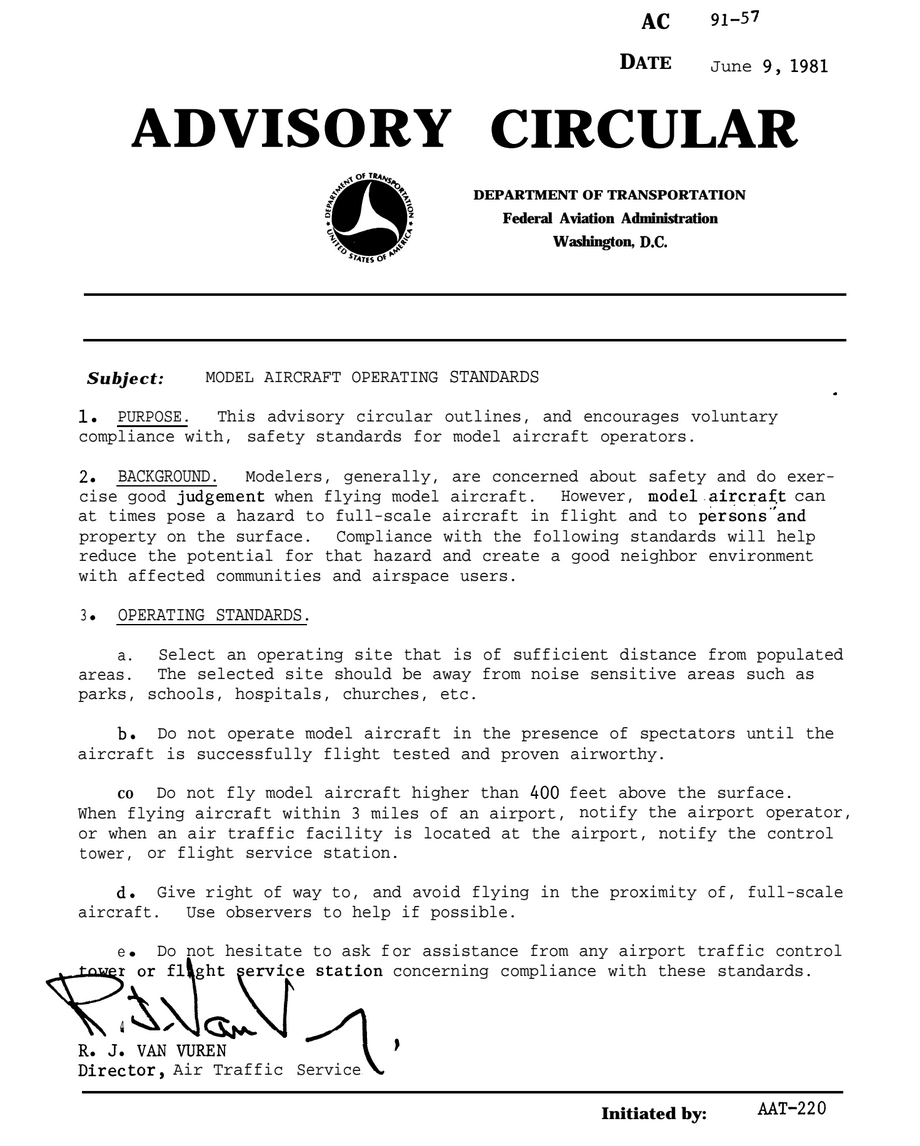
Here’s the latest published Interpretation of the Special Rule for Model Aircraft, as of June 18, 2014. A few additional guidelines and descriptions are noted; such as the 3-mile radius from an airport or landing strip is increased to 5 miles (you have to contact the control tower first if you do plan to fly in that range), and they are still trying to lump ALL UAV/UAS into the “under 55lb” category, including fuel-powered drones and other UAS – not taking into consideration the “under 20lb” multirotors that hobbyists and commercial sUAV pilots are actively using.
Also notice they make special distinction between hobbyist and commercial operations:

But the FAA seems to be more interested in the commercial use of sUAVs than they are overall safety of hobbyist craft – which are the very issue of every reported incident or near-miss to date. While serious, commercial operators are taking care and precautions to ensure their expensive multirotors and cameras don’t come crashing down. With few exceptions, most commercial sUAV pilots will get training and practice extensively to maintain control of their craft and line up the cameras through FPV monitors to get the shots they need instead of dangerously flying over people and property where there could be a potential for a mishap.
Since this awareness of the increased number of sUAVs across the country and several mishaps that have caught the media’s attention, several local, regional and state agencies have issued no fly zones to protect the public and natural open space. It is also now illegal to take off and or land inside a National Park, and you can be cited by a park ranger with a hefty $5000 fine and possibly 6 months jail time. However, since the National Park system does not control the airspace above the park, if you want to take the chance of taking off outside the park’s boundaries and flying over, you’d better hope and pray that your craft makes it back safely outside the park again!
But what about commercial use? Why does the FAA allow hobbyist to fly with the exact same sUAVs that commercial pilots are flying with, but has issued an all-out ban on commercial sUAV flight just because there’s an exchange of money for services?
When I first attempted to contact the FAA a year ago in November, 2013 to get special authorization for commercial use, this was the actual email response I received:
“Dear Mr Foster:
The FAA doesn’t regulate the model aircraft industry. This includes the hobbyists that fly model aircraft and the manufacturers that make model aircraft. We only ask that hobbyists comply with Advisory Circular 91-57. While not my area of expertise, I believe flight standards would investigate hobbyists that fly in a careless or reckless manner.”
Obviously, they’ve changed their minds about this.
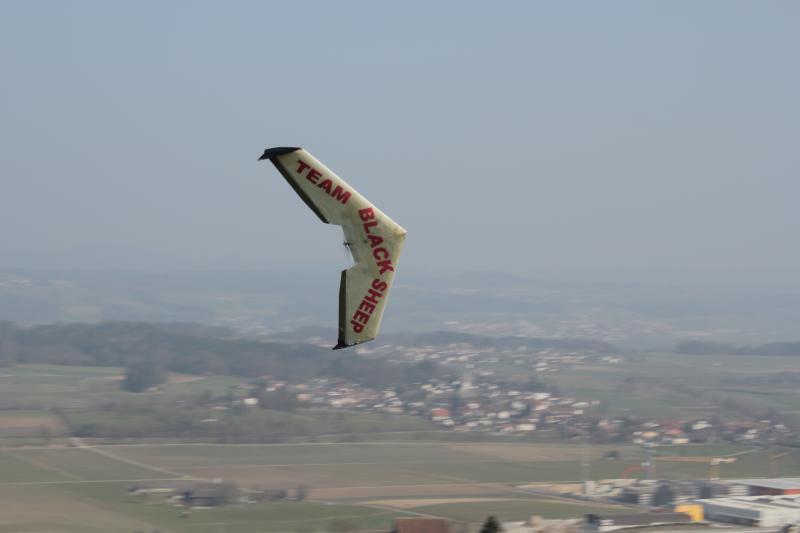
©2014 Team Black Sheep
The Pirker Case
The one case that all eyes have been watching over the past few years and has been responsible for all the media frenzy of late.
In 2011, Raphael Pirker of Team Blacksheep (AKA “Trappy”), a Swiss citizen, was contracted by a publicity firm under contract with the University of Virginia to take aerial videos over and around the campus with his remote controlled powered fixed-wing Styrofoam glider (a Ritewing Zephyr). A couple years later, after viewing his flight online, the FAA levied a $10,000 fine claiming he had operated an UAS for commercial purposes, which the FAA does not permit under current regulations for UAVs/UAS in U.S. airspace. They also contended that his flight was reckless and unsafe and many would agree. Trappy is known to fly crazy stunts and dangerously close to people and objects, as you can see in his many videos online. Here is that initial video that started it all:
But because they also contended that Trappy was the pilot in command of the UAS for compensation, which makes it a commercial use.
Pirker appealed the fine, claiming the FAA didn’t have regulatory authority over the operation of a “model aircraft” – the case was sent to a law judge for the NTSB (National Transportation Safety Board) to make a decision. The judge’s ruling on March 6, 2014 was in Priker’s favor to dismiss.
The decision issued March 6, 2014, by Patrick G. Geraghty, granted Pirker’s motion and set aside the fine. The judge’s reasoning included:
- The aircraft Pirker flew is more likely a model aircraft, and by its own advisory circulars, the FAA excludes model aircraft from the more generic term of aircraft. Thus many of the allegations about improper and unsafe operation of the aircraft that the FAA made in its complaint don’t apply.
- Geraghty further noted that the FAA doesn’t actually define or even talk about UAS in any of its regulatory documents. All mention of UAS is only in advisories, primarily written for internal FAA guidance, and as the documents themselves state, not intended to be regulatory. Thus his decision reflects his observation that the FAA can’t take an action against an operator of a type of vehicle that the FAA hasn’t even officially recognized.
- The judge also emphasized that had there been rules or regulations in place (that required mandatory compliance) regarding model aircraft or UAS or where UAS were defined as “aircraft,” then the FAA didn’t follow its required course (as required in the U.S. Code) of issuing a notice of proposed rulemaking (NPRM), soliciting public comment for 30 days, and then issuing the proper rule or regulation.
BUT… that “victory” for the proponents of the commercial UAS was short lived, as just recently the FAA appealed the judge’s decision based on safety issues and the decision was overturned.
November 18, 2014, WASHINGTON – The National Transportation Safety Board announced today that it has served the FAA and respondent Raphael Pirker with its opinion and order regarding Mr. Pirker’s appeal in case CP-217, regarding the regulation of unmanned aircraft. In the opinion, the Board remanded the case to the administrative law judge to collect evidence and issue a finding concerning whether Pirker’s operation of his unmanned aircraft over the campus of the University of Virginia in 2011 was careless or reckless.
The FAA appealed an NTSB administrative law judge’s decision after the judge dismissed the FAA’s order requiring Pirker to pay a civil penalty of $10,000 for allegedly operating an unmanned aircraft in a careless or reckless manner. In his decision, the judge compared Pirker’s unmanned aircraft to a model aircraft, and found the FAA had not enacted an enforceable regulation regarding such aircraft.
In reaching its decision, the Board determined the FAA may apply the regulation that prohibits operation of an aircraft in a careless or reckless manner to unmanned aircraft. To determine whether Pirker violated this regulation, however, the Board stated an administrative law judge would need to review evidence showing the operation was careless or reckless.
The public may view the opinion and order on the NTSB website at http://www.ntsb.gov/legal/pirker/5730.pdf
Basically, the NTSB has determined that the definition of an “aircraft” is any “device” “used for flight in the air.” This definition includes any aircraft, manned or unmanned, large or small.
So in a press release issued by the FAA on November 18, 2014:
November 18, 2014, WASHINGTON – The Federal Aviation Administration has a responsibility to protect the safety of the American people in the air and on the ground.
The National Transportation Safety Board affirmed the agency’s position that unmanned aircraft systems (UAS) meet the legal definition of “aircraft,” and that the agency may take enforcement action against anyone who operates a UAS or model aircraft in a careless or reckless manner.
The FAA believes Mr. Pirker operated a UAS in a careless or reckless manner, and that the proposed civil penalty should stand. The agency looks forward to a factual determination by the Administrative Law Judge on the “careless or reckless” nature of the operation in question.
So it’s all still left to interpretation and determination of the FAA as to the recklessness of the Pirker case, and all eyes are still on it.
The NTSB did NOT address the issue of “commercial use” of drones/sUAVs.
UPDATE 1/30/2015:
“Aerial photographer Raphael Pirker has settled the civil penalty proceeding brought by the U.S. Federal Aviation Administration in 2013 concerning his flight of a styrofoam Zephyr II model aircraft (or “drone”) at the University of Virginia at Charlottesville in October 2011.
The $1,100 settlement “does not constitute an admission of any of the allegations in the case or an admission of any regulatory violation,” Pinker’s attorney Brendan Schulman said in a statement.”
So where does that leave the rest of us?
Well, if you ask the FAA, you can basically do anything you want within the guidelines as long as you fly safely and don’t fly for payment or commercial purposes.
SAY WHAT??!!
That’s right. According to the FAA website, you can still fly your model aircraft (weighing less than 55lbs) within all the operation limits of the guidelines stated in the Interpretation of the Special Rule for Model Aircraft as long as there’s no commercial attachment.
So what does COMMERCIAL PURPOSE have to do with safety?
Good question!
So – the FAA DOES claim to allow you to apply for special consideration by applying for a Section 333 exemption which requires you first filing for a COA (Certificates of Waiver or Authorization) in which you must first request to get an account for which to access the online application process and you get passed-on to yet another department/entity and it continues… probably best to get some legal assistance on this process and be prepared to wait in the queue.
But since the FAA has allowed exemptions for a handful of film & TV industry professionals, they’ve come with a lot of restrictions that a smaller company or independent couldn’t possibly meet. Some restrictions demand a two-operator UAS, to last less than 30 minutes and remain under 200 feet on a closed set.
Interestingly though, all seven exemption applications for the film companies were awarded through the same law firm and lawyer.
But no word yet on the FAA’s acceptance of the hundreds of other applications sent in through the process, such as construction, geological surveying/study and precision agriculture, which has been booming business in Japan for years now.
Taking Action – Not Standing Still
Not everyone is pleased with the progress (or lack thereof) of the FAA releasing specific guidelines for commercial sUAV/UAS in categories that make sense and with regulation that is both sensible and attainable.
There are several agencies, organizations and entities that are lobbying for these efforts, as well as actually filing suit against the FAA for what they feel is unconstitutional and “arbitrary, capricious, an abuse of discretion, or otherwise not in accordance with law, in excess of statutory jurisdiction, authority, or limitations, and without observance of procedure required by law.”
The AMA has filed suit as they feel the restrictions in the proposed interpretation of the rules is prohibitive to the hobby, as well as manufacturers.
Another group, which includes the UAS America Fund, SkyPan International, FPV Manuals and Peter Sachs with the Drone Pilots Association, which is represented by one of the country’s leading drone law experts, Brendan Schulman. According to Schulman, the FAA’s interpretation of the Special Rule for Model Aircraft was meant to tell those who would use models for commercial purposes that “until we have something in place, you shouldn’t do anything at all.”
Peter Sachs states, “Regulations are one thing, outright barriers are another. Congress ordered the FAA to integrate drones into the national airspace system, not exclude them.” And he’s not alone in this. A group of Senate lawmakers are putting pressure on the FAA to speed up its efforts in developing reasonable rules for drones. Sen. Ron Wyden (D-Ore.) is leading the charge in a letter that states: “These delays force manufacturers and operators who play by the rules to sit on the sidelines while they wait for approval,” Wyden wrote along with Sens. Jeff Merkley (D-Ore.), Heidi Heitkamp (D-N.D.), John Hoeven (R-N.D.) and Cory Booker (D-N.J.), “while others chance fines and operate without any certification from the FAA, which raises serious concerns about public safety.”
Download a PDF of the actual letter here.
A new entity called the Small UAV Coalition has formed with some serious membership support. As posted on their website mission statement, “The Small UAV Coalition advocates for law and policy changes to permit the operation of small unmanned aerial vehicles (UAVs) beyond the line-of-sight, with varying degrees of autonomy, for commercial, consumer, recreational and philanthropic purposes. Our members, including leading consumer and technology companies such as Airware, Amazon Prime Air, DJI Innovations, Google[x], GoPro, Parrot, and 3DR, believe that U.S. leadership in the research, development, and production of unmanned aerial vehicles will benefit consumers in all walks of life. We believe that, working together, we will be able to remove unnecessary policy or regulatory hurdles that impede small UAV development, sales, job creation, and services.”
UPDATE 12/5/2014: Peter Sachs shared this letter from United States Senator Mark R. Warner sent to the FAA on Dec. 4th, pleading with them to expedite the “development of balanced and reasonable UAS regulations” and places the focus on the financial impact the delays can be causing the commercial aerial photography/videography industry and the jobs that coould be created, along with the taxible income revenue. We can only hope to see more of this type of support in the months ahead!
So what about these proposed new rules the FAA is imposing?
Nobody is seriously going to argue that it should be a free-for-all wild west shootout in the sky where anyone can fly whatever/whenever – so yes, some sort of regulations and accountability for pilots is definitely necessary. Most professionals I’ve spoken with agree that a realistic testing/licensing system that assures pilots have basic skills and knowledge in place before starting up a drone/sUAV business. Safety and responsibility are of the greatest concern.
But if the rumors are true that the FAA expects to invoke some of these insane restrictions and barriers to entry, such as requiring a manned pilot’s license for commercial sUAV use, they can expect a big pushback from the industry and the public. Does it really make sense to force someone to go through months of training and tens of thousands of dollars just to fly an sUAV that they already know how to operate?
The Small UAV Coalition’s Executive Director and Advisor, Michael Drobac (Akin Gump Strauss Hauer & Feld) and CyPhy Works CEO Helen Greiner discuss the FAA’s potential rules for commercial drone use on Fox Business:
Peter Sachs adds, “There is nothing wrong with requiring an appropriate level of aeronautical, meteorological and airspace knowledge. That makes sense. However, requiring a manned pilot license to fly a three-pound plastic drone commercially, is like requiring a medical license to apply a Band-Aid. If the reported FAA proposed regulations are actually adopted, the United States is destined to remain a third world nation with respect to drones.”
But for now, there has been no decision – no actual ban – no enforceable actions from the FAA or the NTSB regarding commercial sUAV operation.
So I for one, will continue business as usual: flying safely within the regulated airspace as set-forth by the FAA’s guidelines as any other conscious hobbyist would do. But I won’t hide the fact that I’m teaching others how to fly and shoot and enjoy this amazing technology. And I will continue to test manufacturers’ sUAVs and cameras and speak at conferences, conventions and workshops. And I will show farmers how to use this technology to monitor their crops. And help other businesses and professional photographers and filmmakers learn how this technology can help them create better images and videos. I’m confident the industry will prevail. Go fly my pretties… fly… FLY!
UPDATE 12/5/2014: Check out my interview discussing this topic on THAT DRONE SHOW this week – speaking with David & Sarah Oneal, we look at the article and the state of the industry as a whole.
UPDATE 12/10/14: Committe on Transportation and Infrastructure U.S. Unmanned Aircraft Systems: Integration, Oversight, and Competitiveness
Update 2/4/2015: Lisa Ellman featured on Huffington Post Live interview: “Obama’s Former Student Is Now Helping Him Shape Commercial Drone Policy”
UPDATE 2/15/2015: DOT and FAA Propose New Rules for sUAS
- The operator must always see and avoid manned aircraft. If there is a risk of collision, the drone operator must be the first to maneuver away
- The operator must discontinue the flight when continuing would pose a hazard to other aircraft, people or property
- The operator must assess weather conditions, airspace restrictions and the location of people to lessen risks if he or she loses control of the UAS
- The drone may not fly over people, except those directly involved with the flight
- The drone must operate below 500 feet altitude and no faster than 100 mph
- Drones must stay out of airport flight paths and restricted airspace areas, and obey any FAA Temporary Flight Restrictions (TFRs)
They also discussed a “Micro UAS rule” for flights over people in Class G airspace for sUAS under 4.4lbs.
To review the full press release from today’s announcement, go here.
To add your comments on this issue to the FAA, visit: http://www.regulations.gov/#!docketDetail;D=FAA-2015-0150
In the meantime while all of this is sorted-out (could take up to 2 years before these regulations go into affect), you will still need to apply for the Section 333 Exemption and follow the procedures in place to get approval for commercial UAS filght in the FAA’s eyes. No mention or comment of enforcement currently given at this time.
UPDATE 3/14/2015: FAA Harrasses Fliers who Post on YouTube
UPDATE 8/16/2015: FAA’s Attempts to Solicit Fear of Drones is Waning… Facts, Please!
By now, if you haven’t heard the story about the wildfires burning trapped cars on Interstate 15 in Southern California, then you’re probably living under a rock. What made this story sensational was the report of “5 drones in the area” kept airborne firefighters away from dousing the fire – which is a total fabrication by the media and was never claimed by the forest service nor the firefighters. However, there was an actual report of one individual drone (manufacture/make unknown) that may have been launched by a motorist trapped in traffic to fly up ahead and see what was holding things up. Again – purely speculative on all parts and nobody yet has been convicted of any wrongdoing in the matter.
But meanwhile, the FAA in their attempt to educate the public worked with the “Know Before You Fly” campaign to produce with the US Department of Agriculture and the Forest Service, this poster campaign as a way to get people to think before flying around wildfires.
While it may be as effective as Smokey the Bear attempting to get people to not flick a lit cigarette out of their car window, the ACTUAL reported number of REAL incidents involving UAV/Drone interference with airborne firefighting equipment and pilots is still vague – regardless of claims by the FAA.
Meanwhile in Arizona, a different take on drones potential use to actually HELP firefighters doesn’t see the light of day in any of the major news media channels.
Then on August 12, 2015, the FAA posted this article, stating the pilot reports of close calls with drones to more than 650 as of August 9th of this year, up from a total of 238 sightings the previous year. With the FAA’s new stance to all commercial pilots regarding UAVs, “See Something, Say Something”, it appears that every UFO, bird and reflection in the sky is now automatically considered a “drone”.
Patrick McKay. a fellow UAV pilot from one of the online UAV Legal groups I belong to, had filed a FOIA request with the FAA for the following documents back in April of 2015:
“All releasable records related to civil enforcement actions or certificate actions against operators of unmanned aerial systems (UAS) or model aircraft, initiated in 2014 or 2015. This request includes, but is not limited to, letters of investigation, notices of penalty assessment, investigative reports, and other releasable documents, [and] a list of all incidents involving unmanned aerial systems or model aircraft that have been investigated by the FAA in 2014 or 2015 but are still pending or did not result in enforcement action, and all releasable documents related to those incidents.”
After several months of going back and forth in correspondence with the FAA, he finally got a response on August 13, 2015. You can read about his experience here, as well as download the actual letters and the report in PDF form. This was an actual copy of the FAA’s National Program Tracking and Reporting System (NPTRS) which includes a list of 237 records, with only the personal information redacted – NOT over 650 as the FAA claimed in their latest article.
The major take-aways from the report, as Patrick highlights in his findings, is that the majority of the “incidents” recorded are unsubstantiated reports of UAS sightings by pilots or home owners where the FAA were never able to conclusively prove that a UAS was flown in the area or identify the UAS operator. Also, most incidents resulted in a letter or information about drone safety was provided to the persons actually identified and located in minor incidents. Other cases where the FAA either discovered through an individual’s website or by a report submitted by another party, that someone was operating a commercial UAV service, they were sent letters and information about applying for a section 333 extension. Other cases were dismissed if it was decided that the drone operators were flying safely and within the guidelines of the FAA’s hobbyist rules. And several reports involved loss of control of military or border patrol UAVs.
None of the reports resulted in fines, imprisonment or revocation of one’s Private Pilot License or seizure of their craft.
One thing is interesting, that the AMA (Academy of Model Aeronautics), whom many of us are card-carrying members of and supporters of their mission and cause for the RC UAS industry, appear to be actively reporting UAS operators to the FAA. This seems not only counter-productive, but will eventually drive a deeper wedge between the older RC fixed-wing model aircraft group and the UAV/drone group, instead of bringing them together for a common cause.
So PLEASE FAA – Let’s Get Beyond the Fear-Mongering and DO SOMETHING to Improve Drone Safety!
John Goglia, former NTSB Member and world-renowned aviation safety expert writes in Forbes in his article, The Most Important Thing FAA Can Do Now To Improve Drone Safety,
“…as hard as it is to believe the FAA has taken the absurd and unsafe position that training drone users – unless it is done for free as a hobby or recreational activity – is illegal.”
And for those afraid that drones are doing to be spying on them or over their property/in their bedroom windows, Evan Lewis (goes by the “Drone Dude” on his YouTube channel) did a comparison test video of a high quality 4k capable drone (DJI Inspire 1) and your typical DSLR with a Zoom lens, just to show the tin-foil hat club that they’ve really got nothing to be afraid of, but their own paranoia.
And finally, in an article by Alistair Charlton of the International Business Times, Fear of drones crashing into passenger planes is ‘much ado about nothing’ says airline pilot – he outlines the blog post of a 30-year veteran airline pilot that compares the common bird strike to a drone with a much lower mass and weight of a common duck, and citing that birdstrikes are just no longer news in the media or aviation circles.
‘Even if a plane were to hit a drone during takeoff or landing, Manno remains doubtful that any damage would be caused. He recalled how striking a duck weighing 10 pounds (4.5kg) did nothing more than smear his windscreen with “duck guts” and put him off his lunch. “None of the birds went into either engine. No aircraft systems were affected. Nobody (besides Pittsburgh tower) knew until after landing when we filed the required reports.
“This is a pretty good predictor of what might happen if the rare, statistically minute chance of a drone-aircraft collision were to occur: likely, nada.”
So again – I will state the obvious for those still with me here… any idiot with a credit card can buy a drone (or a gun) and do stupid things with it. All the regulations, laws and fines in the world aren’t going to stop them from doing stupid things.
And it has NOTHING to do with commercial use of UAS – definitely not safety, as we’ve outlined before that commercial operators are the most trained and cautious fliers out there because they (a) have a responsible mission to accomplish with for their clients (b) most likely carry liability insurance and (c) have the most to lose if something does go wrong, so they aren’t going to risk that chance by being in the wrong place at the wrong time.
UPDATE 9/22/2015: AMA Responds to FAA’s Drone Sighting Report
In direct response to the FAA’s August press release “Pilot Reports of Close Calls with Drones Soar in 2015” that I rebutted earlier last month, the AMA (Academy of Model Aeronautics) examined the public records of 764 reports of sightings and determined the FACTS of these claimed statistics and sensational headlines the media has grabbed up to further fan the flames in this heated topic. This study was also picked up by USA Today as “Drone hobbyists find flaws in “close call” reports to FAA from other aircraft”.
It’s obvious that the FAA has given manned aircraft pilots the instructions “See Something – Say Drone”, as out of these 764 “close call” sightings, that only 27 were actually described by pilots as a “near miss” (sic) – a term itself that makes the hair stand up on the back of my neck! (wouldn’t a “near-miss” actually be a “hit”? Should be rephrased to “near-collision”… Perhaps we’ll just refer to them as “close-calls” – if in fact they actually were). We’re still taking all these reports on the eyewitness accounts of individuals with no substantiating data or proof that they actually happened. Many of the reports listed were of military drones, balloons, UFOs and other phenomenon that had nothing to do with private/personal UAVs.
Some key takeaways from the AMA’s Study:
- Not every sighting or report was a ”close call.” Many were just that – sightings. Only a small fraction was legitimately reported as “near misses” or “near mid-air collisions.”
- Some of the most serious incidents in the FAA data – including two actual crashes – involve government-authorized military drones, not civilian drones. • It’s not just uninformed consumers causing problems; the records include several reports of authorized or unauthorized public entities and commercial operators flying. Given the widespread interest in commercial applications, unidentified operators cannot be presumed to be “hobbyists.” • Some sightings appear to involve people flying responsibly and within the FAA’s current recreational guidelines.
- Many things in the air – from balloons and birds to model rockets and mini blimps – are mistaken for, or reported as, drone sightings even when they are not. One pilot in Minnesota even reported seeing something that “resembled a dog.”
- A number of sightings have occurred over or around stadium events, wildfires, power plants and other critical infrastructure. These raise different concerns from pilot sightings.
- Despite the FAA’s stated desire to find and punish rogue operators, in almost 20% of reports – 142 reports, to be exact – local law enforcement either wasn’t notified or it was unknown whether local law enforcement was notified.
It was also noted that the majority of these reports were merely “sightings” and not reported as “near mid-air collisions”. On the contrary, actually. Only 1.3% of the records (10 of 764) explicitly note that the pilot took evasive action in response to a drone.
PLUS… it was noted that military drones – NOT civilian drones are involved in some of the most serious incidents, including ALL actual crashes. Yet they remain in the report and the misleading propaganda from the FAA remains:
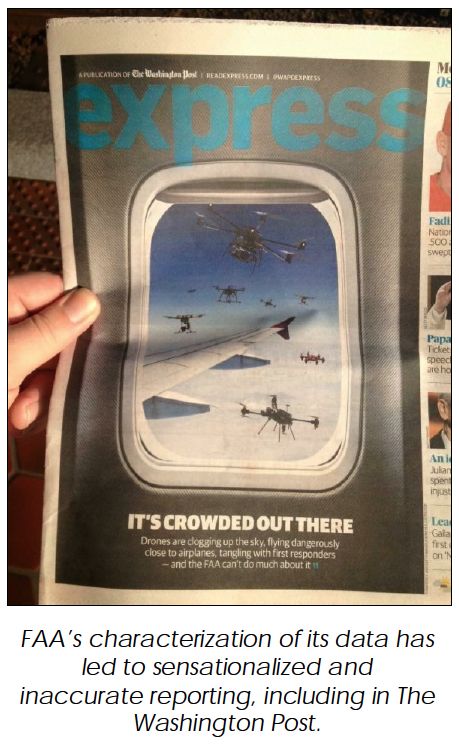
More recently, the FAA admitted in an August 30 news story that there is no regulatory definition for what constitutes a “close call.” The agency said the phrase was “simply part of a news headline,”2 Implying that the agency may have intentionally used sensational language to spur media interest in its data. The general public, the media, our nation’s lawmakers, and all stakeholders in drone technology deserve better from the government agency responsible for the safety of the nation’s skies and for reporting objectively and accurately on public safety issues.
The AMA concluded with a press release on Sept 14, 2015 that announced the release of their findings in their detailed study.
While the AMA has been working closely with the FAA for many years to encourage safety and responsible operation of model aircraft, they do note that this recent report sends the wrong message to the public and recommend that the FAA take a closer look at their data and represent it more acurately and responsibly.
I couldn’t agree more!!
Be Smart. Be Safe.
But Keep Flying!
**Final UPDATE 1/22/2016: FAA Drone Registrations & Beyond
Now that I’ve been on this topic for a year and a half now and the FAA STILL hasn’t complied with the Congressional mandate to have actual drone legistlation in place, I’m going to summarize what the state of the current registration process is for both hobbyist and commercial users and what I’ve done personally and encourage others to do at this point.
First, the Hobbyists:
Let’s address the most recent issues about the FAA’s drone registration for all consumer drones weighing over .55lbs (250gr) and under 55lbs (or anything over two sticks of butter).
Registration is a statutory requirement that applies to all aircraft. Under this rule, any owner of a small UAS who has previously operated an unmanned aircraft exclusively as a model aircraft prior to December 21, 2015, must register no later than February 19, 2016. Owners of any other UAS purchased for use as a model aircraft after December 21, 2015 must register before the first flight outdoors. Owners may use either the paper-based process or the new streamlined, web-based system. Owners using the new streamlined web-based system must be at least 13 years old to register. Owners may register through a web-based system at www.faa.gov/uas/registration
This is a hotbed of controversy at the moment as people are freaking out about having to give up their personal information that the FAA will make public and become a major security and privacy issue.
Well, almost… kinda… buuuuuut, not really. The only information you ill be providing during registration that can be extracted through the FAA’s registration database is your name and address. That’s it. You can spend 5 minutes searching Google and get a lot more info about someone than you ever will from the registration database. The AMA has issued a notice to all their members to hold-off registering as they’re trying to work a deal with the FAA to allow registered AMA members to just use their membership numbers instead, but so far the FAA isn’t going for it.
But what some fear is a privacy issue, might apply for minors. The FAA says that everyone 13yrs+ must register if they have a drone that fits the criteria. So if your 10yr old nephew got one from Christmas and flies it recklessly and crashes it, then it will be his parent’s/guardian’s responsibility – IF he’s caught.
Well, there’s the issue with all this, really. Registration has NOTHING to do with safety or education or proof of experience – it’s ALL about identifying owners of crashed drones when an incident occurs. BUT, authorities must recover the errant drone and get the registration number off it first. That’s IF the owner actually registered in the first place.
The FAA claims that the penalties for not registering yourself as a drone owner (yes, it’s YOU that gets registered – not your individual drones) may be faced with a civil fine up to $27,500. That’s only if you get caught flying it – even if your’re safe and flying in an authorized area, but you’re not registered. Criminal penalties can go up to $250,000 and a threat of imprisonment of up to three years!
I’m not sure how any/all this is going to be enforced, but the FAA has been soliciting local LEO to help curb the activities – to which it’s been met with a bit of apathy to date, fortunately. Police have a lot better things to do with their time than to shake down kids to see if they’re registered or not.
But, in the name of compliance and sharing my full step-by-step process for registration, I shared my experience of registering the first day that registration was open, so you can read all about it here.
Commercial Drone Registration – my Updates:
As I’ve mentioned earlier in this on-going article, the only way the FAA will recognize you as a commercial drone pilot is if you apply for and receive a Section 333 Exemption. I applied for mine last summer and received it last fall. But that was only the beginning. Obtaining a licensed pilot with a SPL or PPL to actually fly my craft with me on commercial flights, registering all my drones used in the commercial operation with their own N numbers, getting the proper paperwork in order and making sure I’m properly insured is all a lot of extra work. Even if I just want to fly over someones barn or house for some real estate photos/videos or to shoot an outdoor wedding reception.
Most people don’t realize all the work that goes into trying to comply and how costly it is for legal fees, insurances, registrations, etc. Which is why my colleague Mike Fortin of Cinedrones wrote this article to reach out and educate those who have applied for their 333 and might not be in full compliance – yet.
Something else most folks don’t understand is that offering someone $100 “just to get a qucik shot of my roof” is still considered commercial use – IF you’re caught.
I’m a pretty public guy and also a professional videographer/producer, so I can’t take a chance of trying to “skirt the system” at this point – even if there really ISN’T any official “laws” in place yet, so I’m kinda “taking one for the team” – mostly to see how the process works and the system that drives it/enforces it follows through. Then I share it with all of you.
I’m closing this article with my final submission, but feel free to comment and I’ll try to respond.
You can continue to follow my articles on drone technology, policy and other interests over at the Drone Coalition (no association with ProVideo Coalition), but a venture I co-founded in the interest drone of technology beyond the camera’s eye. I will continue to post camera/video related articles and reviews here on PVC, so stay tuned…
Be Smart. Be Safe.
But Keep Flying!
_____________________________________________________________________________________
Jeff Foster is a published author of several how-to books and training videos in the motion graphics, animation and video production industries and is an award-winning video producer and artist. Visit his web site to learn more about his training methods, tips & tricks at PixelPainter.com

Filmtools
Filmmakers go-to destination for pre-production, production & post production equipment!
Shop Now
